Foreword
For twenty years I have been practising and teaching the Pilates method for health and wellbeing. In that time I have learned from many different practitioners, all with their own voices and interpretations. Some have led me into blind alleys, others have inspired me to take a sideways look at a different picture, but through all, my curiosity has been driven by the body, my body, the workings of it, its mystery, and my sense of self, my relationship to others and to my environment.
Exploring the somatic process has enriched my own personal movement practice and given me a deeper physical understanding of the work that I do. As a Bowen practitioner I am intrigued by the body’s connective tissue web of fascia, a tensegrity system that maintains the body in movement and function and the evolving of understanding that the body is not the machine-like entity it has been held to be. As an artist, my creative practice has been concerned with my relationship with internal geography: what I feel, what I am: my sense of presence; and with the process of creativity. Considering the tapestry of influences that is the fabric of the somatic education field, I set out to write this essay to discover how my own interests and practice are woven in, how my own threads of understanding contribute to the whole and to pursue the cross weaving of influences from some key somatic ancestors who may have played their part in my own interpretive practice of Pilates as a somatic practice.
Introduction: unravelling a web of influences.
My love for movement and dance reaches back to my happy infant days at school in the 1960s when we children took ‘Music and Movement’ lessons from the BBC Home Service, (BBC 1957) involving free movement, expression and use of imaginative visualisation, not knowing or caring that the lesson was based on Rudolf Laban’s theories of the phenomenology of dance. The art historian and philosopher of education, Herbert Read, (Read 1943) was profoundly influential in the area of British post war teacher training. Read’s philosophy embraced Jungian psychology and the Platonic ideal of giving the arts a central position in the education of the child. Read lay the ground for Laban influenced movement to be taught in the British state school system and until the 1970’s modern educational dance was taught in most state schools. (Preston-Dunlop 2008). As a child I was familiar with this type of movement class:
Run anywhere. Which part of you is touching the floor? Now move in different ways with your feet still touching the floor. (The children may skip, hop, gallop, slip, jump, -etc……) […..] curl up in little ball on the floor; roll along. You have been rolling in a little ball. Can you roll stretched out? can you find another way of travelling with your body on the floor? (Anon. London County Council 1964: 15)
This teachers handbook cites Laban’s Modern Educational Dance in its bibliography. ‘education was for him [Laban] an education of the whole person, including the spirit.’ (Preston-Dunlop 2008: 229) Fascinated by my connection to this lineage and by how one person may shape the life of another across decades, I will first revisit some of my own influencers along the route of my journey into teaching movement and into somatic education, noting their connections to somatic education pioneers.
‘aerobics may add years to your life but it doesn’t necessarily add life to your years’ (Knaster 1996: 247). I taught aerobics to earn my keep while I was at University studying for a Degree in Art, thirty years ago, it was through this work that I encountered The Pilates Method.
As a new Pilates teacher I was introduced to the work of the somatic educator, Liz Koch, (Koch 1999) In her workshops Koch had taken inspiration from Emilie Conrad the originator of Continuum, using relaxation, sounding and breath work to promote sensation and response in deep muscle tissue. Koch incorporated the ball work of Elaine Summers’ Kinetic Awareness method into her classes, utilising soft yielding balls to promote fluidity in the fascial structures of the body.
Working with Koch facilitated for me an experience of sensual embodiment and introduced me to the work of anatomist and Rolfer Dr Gil Hedley, whose research into fascia taught me the significance of interstitial fluidity in maintaining movement function and the importance of movement to maintain fascial function (Juhan 2003). Movement is the essence of our being in a body. Studying anatomy in the pathology laboratory with Hedley, our anatomical researches are supported by our acknowledgement of what it is to be alive as we students are reminded of our somatic presence through witnessing circles, meditation and sharing touch between students at the start of each day of study.
Koch and Hedley highlighted the limitations of Cartesian Dualism for me, the traditionally held assumption that mind and body are separate, (Soloman and Higgins 1996; Stumpf and Fieser 2003) instead offering me the understanding that the body and the mind, or psyche, is a completely integrated system. These two practitioners led me into an exploration embodiment and a pursuit of understanding of the nature of fascia and its role in wellbeing. I learned that the body has the ability to make decisions, to message information throughout the entirety of itself, to self regulate function.
[…] physical action cannot be seen as mechanical manipulation mysteriously governed from a distance by mental commands. The body is not a passive vehicle simply awaiting instructions from the mind. Nor is it a system of pulleys and levers ( as seventeenth century mechanistic philosophers thought) that only comes to light when infused with a soul. Rather it is inactive entity, capable of goal oriented action and intelligent response to the environment. (Carel 2014: 26)
Bowen patients remark that, besides the change in their aches and pains, they feel lighter, happier, the fog has lifted, they feel calmer. Havi Carel, discussing the philosophical view of phenomenologist Merleau-Ponty states: ‘the separation between mind and body does not make sense’ (Ibid)
My personal practice of Pilates has become informed by my experience of Somatic Movement, my experience of giving Bowen touch therapy has been deepened by my somatic exploration of touch and presence. These practices have all contributed to developing an ongoing sense of felt connection to my internal and external environments.
From my journal: Winter solstice at Sandgreen beach. I allow my feet to anchor to the sand and my standing body to become heavy in my joints. I hear the distant sea, the oyster catcher and my own breath. I stand still and experience weight through my bones and the unity of myself and my surroundings.
Historical Context
My research into the history of the earlier influencers of somatic education and the placing of my own practice based on the work of Joseph Pilates, in this timeline, drew me to the period during and after the Great War. After the war, in Germany, following the abdication of the Kaiser and ensuing economic upheaval, there was a zeitgeist of rebellion, a desire for freedom expressed in new art forms and cultural transformations. The Expressionist Movement, expounding the expression of subjective experience, arose out of of the Weimar Republic and extended into art, dance, theatre, film, architecture and music (Eddy 2017). In this time of change and upheaval, politically engaged artists such as Otto Dix who had fought in the trenches, Ernst Kirchner who founded Die Brucke art movement and the artists such as Vasily Kandinsky and Paul Klee of Der Blaue Reiter group expressed a desire for a new, more liberal and open society (Tate 2019). At the University of Munich, the Munich Group of Realist Phenomenologists were concerned with the study of consciousness from a first person point of view. The development of the psychotherapeutic paradigms of Freud and Jung meant that the traditional constraints against showing feeling were being challenged. This cultural climate was ready for inner exploration of the feeling body.
In Munich in the pre war years, the artist Wasily Kandinsky, ‘Concerning the Spiritual and Art’ (1911) theorised the significance of colour and form interdependence. Kandinsky’s approach counterpointed Laban’s movement theories of rhythm and space: exciting new theories of subjectivism in art and movement, concerning expression of the experiential rather than the performative. Along with new discoveries in medicine, neurophysiology and psychology, this was the cultural background for the development of new forms of therapeutic body approaches and movement therapies. My childhood Laban based music and movement lessons reach right back into this era.
Munich was a hotbed of cultural creativity at this time and here Laban absorbed the Eurythmics of Emile-Jacques Dalcroze and studied the Korperkultur of the American physician and sculptor Bess Mensendieck a teacher of Gymnastik. considered to be one of the grandparents of somatic work. (Speads interviewed by Hanna 1981) Mensendieck’s system of Gymnastik emphasised the therapeutic benefits of exercise: a whole body and mind approach. Mensendieck was pragmatic in her approach although as Valerie Preston-Dunlop points out; ‘The focus of philosophical interest amongst thinkers, critics and artists…was undeniably spiritual’ (Preston-Dunlop 2008:19).
During the war years Laban was in Zurich and became acquainted with Carl Gustav Jung. Jung’s theories of the Four Archetypes and the functions of intuition, sensing, thinking and feeling as a means to discover an inner world, exerted a profound influence on Laban, who found parallels between psychic function and the movement framework of time, weight, space and flow. Laban’s teaching was of movement and expression and the pursuit of physical and spiritual freedom. What places him in Eddy’s timeline of Somatic pioneers and influencers (Eddy 2017:102) is his concern with inner exploration of the self through dance and movement, dance as an expression and inner felt experience, rather than the purely performative aesthetic of dance. (Bolsanello 2015)
‘Rudolf Laban’s ideas were influenced by the social and cultural changes of the time and the contexts that he worked in. Rudolf Laban believed the best way to advocate this freedom was by mirroring it in dance and the movement arts.’ (Preston-Dunlop: 2017)
Laban’s wide ranging curiosity and eclecticism explain his pivotal role in the development of the movement practices which lead into our understanding of somatic movement education. Laban provided me with my earliest influence in movement at infant and junior school, my realisation since researching this essay. I am interested to discover that Laban and Pilates were contemporaries in inter-war Hamburg. (Rouhianien 2010) After internment in Great Britain as an alien during the First World War, Joseph Pilates had returned to Germany and settled in Hamburg in 1919. (Friedman and Eisen cited in Rouhianien 2010). Laban established a dance school there in 1923, it is said that Laban watched Pilates at work and incorporated some of the strengthening routines into his own classes. (Knaster Western Movement Arts p255) (Rouhanien 2010). At this time Mensendieck was also in Hamburg teaching Gymnastik, a movement method originally designed for women. Pilates however had been a ‘Turnvereine’ coached by his father in military style of apparatus based physical fitness.
Previously the only system of physical education in Germany was created for men. It emphasised muscle building and was almost a preparation for military training. It was Mensendieck and Kallmeyer who introduced gymnastik in Germany and Elsa Gindler studied with Kallmeyer in Berlin. (Speads interviewed by Hanna 1981)
Before the war Pilates had made a reputation as a physical trainer. We can speculate about the influences that the whole body movement practices of Mensendieck, the expressionism of Laban and the breath work of Elsa Gindler in Berlin, were to have on him during the seven years that he spent in Hamburg. At this time the psychoanalytical work of Freud and Jung were well known in cultural circles and their ideas were taken up by teachers involved with physical wellbeing. We can detect no direct acknowledgement of these thinkers in Pilates’ publication ‘Your Health’ (1938) and yet his method emphasises breath, concentration, flowing movement, and control of mind over body, harking back to the work of Gindler who incorporated Freudian psychotherapeutic elements into her breath and movement work (Loukes 2006).
‘Contrology begins with mind control over muscles’ (Pilates 1998: 10) which begs the question: was something lost in translation between the doing of the movements and the writing of them? An immigrant with English as his second language, he must have found himself needing to earn his living. An advertising pamphlet for Pilates’ studio from circa 1935 states that his method of exercise will improve the individual’s life opportunities by improving his physique:‘with drooping shoulders, hanging heads, weak heart and lungs in a flat underdeveloped chest, with flat feet, bow legs, knock knees – or with a body thin or too fat, you can never be as successful as you should be’
His emphasis on the importance of a healthy body and a healthy mind appears to be more to do with the individual’s function in society rather than individual personal growth and emotional wellbeing. (ibid) However he also states in Return to Life Through Contrology:
‘such a body freed from nervous tension and over fatigue is the ideal shelter provided by nature for housing a well balanced mind that is always fully capable of successfully meeting all the complex problems of modern living. Personal problems are clearly thought out and calmly met’ (ibid: p23)
It is impossible to execute Pilates Method fully without breath awareness and bodily concentration and in this respect the practice of the Pilates Method requires somatic awareness. I propose that Pilates himself must have experienced this understanding, but was unable to convey meaning to his students. Pilates was a undoubtedly a ‘kinetic genius’ ( Eddy 2017:56), was he a somatic educator in our contemporary understanding of the word? The principles outlined by ISMETA (2019), may question whether Pilates was a somatic educator due to the overtly directed nature of his Method but he must be placed in the role of influencer to the first generation of somatic pioneers. (Eddy 2017)
An aim of somatic movement practice is ‘to develop a person’s capacity to move with internal awareness and a sensitive engagement to their body’ (Collinson and Lamford 2018) and this is certainly my experience of Pilates Method practice. Many of the pioneers of somatic education learned and practiced his method, especially in the world of dance: Martha Graham and George Balanchine would recommend dancers to Pilates for rehabilitation and strengthening, Ted Shawn, Ruth St Dennis, Hanya Holm, ( Rouhianien pp 4; 9) and Elaine Summers (Eddy 2017:56) amongst many others, took tuition from Pilates, a crossover with the influence of Laban and the ongoing development of somatic movement research carried forward by dancers such as Elaine Summers and Hanya Holm.
Conclusion
The Pilates method directed me towards discovery of the somatic field but my engagement with this method follows a thread from my Laban inspired creative movement education. The practice of breath, movement, concentration and quietude required in Pilates fulfils the description of a somatic practice for an experienced practitioner although the specific spoken guidance needed to teach and learn the method can, for the novice, negate spontaneity and movement impulse. Knowledge of the Somatic field will deepen practice of the Pilates method, but the reverse cannot be true.
Movement inspired by Laban and Pilates have both contributed to my own felt experience of physicality and self. Laban expounded expressionism, creativity, naturism, sexual freedom, experimentation in the pursuit of understanding self and spirit. Pilates work was about discipline and creating physical agency in a modern industrial world. ‘It is this history of diversity across numerous bodily, creative and scientific professions that engenders the continuing interdisciplinary nature of somatic education’ (Eddy 2009:11).
Reflection on historical precedents to our current position as Somatic practitioners and scholars moves us forward into a commonality from which meaningful research and evolution may take place. Considering these two pioneering influencers to our field of somatic education practice has been foundational in establishing an understanding of how my interests and practice have been informed.
Reference list
Art Terms, 2019. Tate Art Galleries. [online] Available at https;//www.tate.org.uk/art-terms. [Accessed 20th April 2019]
BBC (1957) Home Service schedule Web page available at https://genome.ch.bbc.co.uk/schedules/bbchomeservice/basic/1957-05-22 accessed 23rd April 2019
Bolsanello, D. (2015) ‘Is Pilates a Somatic Education Method?’, Brazilian Journal on Presence Studies, Porto Alegre. 5:1, pp101-126.
Carel, H. (2014) Illness. Routledge, Abingdon Oxon. OX14 4RN. pp 26
Collinson, P. Lamford, T. (2018) Induction notes to the MA in Dance and Somatic Wellbeing 2018-2019 University of Central Lancashire.
Eddy, M. (2009) A brief history of somatic practices and dance: historical development of the field of somatic education and it’s relationship to dance. Journal of Dance and Somatic Practices vol 1:1 p24
Eddy, M. (2017) Mindful Movement, The Evolution of the Somatic Arts and Conscious Action.
Bristol, Intellect. p65; p102;
German Expressionism, (2019). Museum of Modern Art, New York. [online] Available at <https://www.moma.org.s/ge/curated_ge/ [Accessed 20th April 2019]
ISMETA (2019). Scope of Practice. Available at <https:/ismeta.org/scope-of-practice> Accessed 20th April 2019
Hedley, G. Inner Space Library, (2019). Available at <https://www.gilhedley.com> accessed 24th April 2019
Hanna,T. (1981) Interview with Carola Spears, in D. Hanlon Johnson (ed) Bone, Breath and Gesture Practices of Embodiment, Berkeley, California: North Atlantic Books. p26
Juhan,D. (2003), Job’s Body. Barrytown, New York: Barrytown/Station Hill Press. pp59-90
Knaster, M. (1996) Discovering the Body’s Wisdom. New York, New York: Bantam Books. p247
Koch,L. (1999) The Psoas Book. Guinea Pig Publications
London County Council (1964), Movement for Infants. London County Council, County Hall, London. p.15; p63.
Loukes, R. (2006) ‘ ‘Concentration’ and Awareness in Psychophysical Training: the Practice of Elsa Gindler’ New Theatre Quarterly 22: 4, pp.395-396
<https://www.cambridge.org/core> Accessed 17th April 2019
Preston-Dunlop, V. (2008) Rudolph Laban An Extraordinary Life. Alton, Hampshire, UK. Dance Books LTD p229; p19;
Pilates, J. (1945) Return to Life Through Contrology. Address not available, Presentation Dynamics. Second edition 1998. p10; pp8-24;
Preston-Dunlop, V. 2017. Trinity Laban Conservatoire of Music and Dance, Rudolph Laban. Available at <https://www.trinitylaban.ac.uk/about-us/our-history/rudolf-laban> Accessed 18th April 2019
Read, H. (1948) Education Through Art. London, Faber. Third edition 1958.
Rouhianien L. (2010) ‘The Evolution of the Pilates Method and its Relation to the
Somatic Field’ Nordic Journal of Dance 2. p65
Soloman, RC and Higgins, KM. (1996) A Short History of Philosophy. Oxford University Press Inc, New York, New York. pp181-186.
Stumpf, ES and Fieser, J. (2003) Socrates to Sartre and Beyond. McGraw Hill, New York, New York. pp232-234
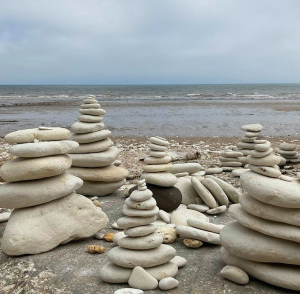 ad a lot about ‘the core’ in the media, in social media sites and fitness blogs. Yes, sure, for bodyworkers like myself it is a convenient shorthand to describe a particular muscle function but it is really time to bust the myth of ‘the core’. As human beings, we are not supposed to be walking around bracing, pulling in our stomachs and squeezing our pelvic floors! It’s just not a functional or comfortable way of using our bodies. I know, if you have been to any exercise class you will have heard the advice to hold your stomach in while you exercise, and, hands up, I have been the person saying this in the past, back in the olden days when I was an aerobics instructor. The problem is, we can be pulling in our belly muscles too strongly and teaching our body to override the natural reaction of our stabilising muscles. All sorts of problems can result from this, from displacement of the pelvis to problems with the gut and breathing.
ad a lot about ‘the core’ in the media, in social media sites and fitness blogs. Yes, sure, for bodyworkers like myself it is a convenient shorthand to describe a particular muscle function but it is really time to bust the myth of ‘the core’. As human beings, we are not supposed to be walking around bracing, pulling in our stomachs and squeezing our pelvic floors! It’s just not a functional or comfortable way of using our bodies. I know, if you have been to any exercise class you will have heard the advice to hold your stomach in while you exercise, and, hands up, I have been the person saying this in the past, back in the olden days when I was an aerobics instructor. The problem is, we can be pulling in our belly muscles too strongly and teaching our body to override the natural reaction of our stabilising muscles. All sorts of problems can result from this, from displacement of the pelvis to problems with the gut and breathing.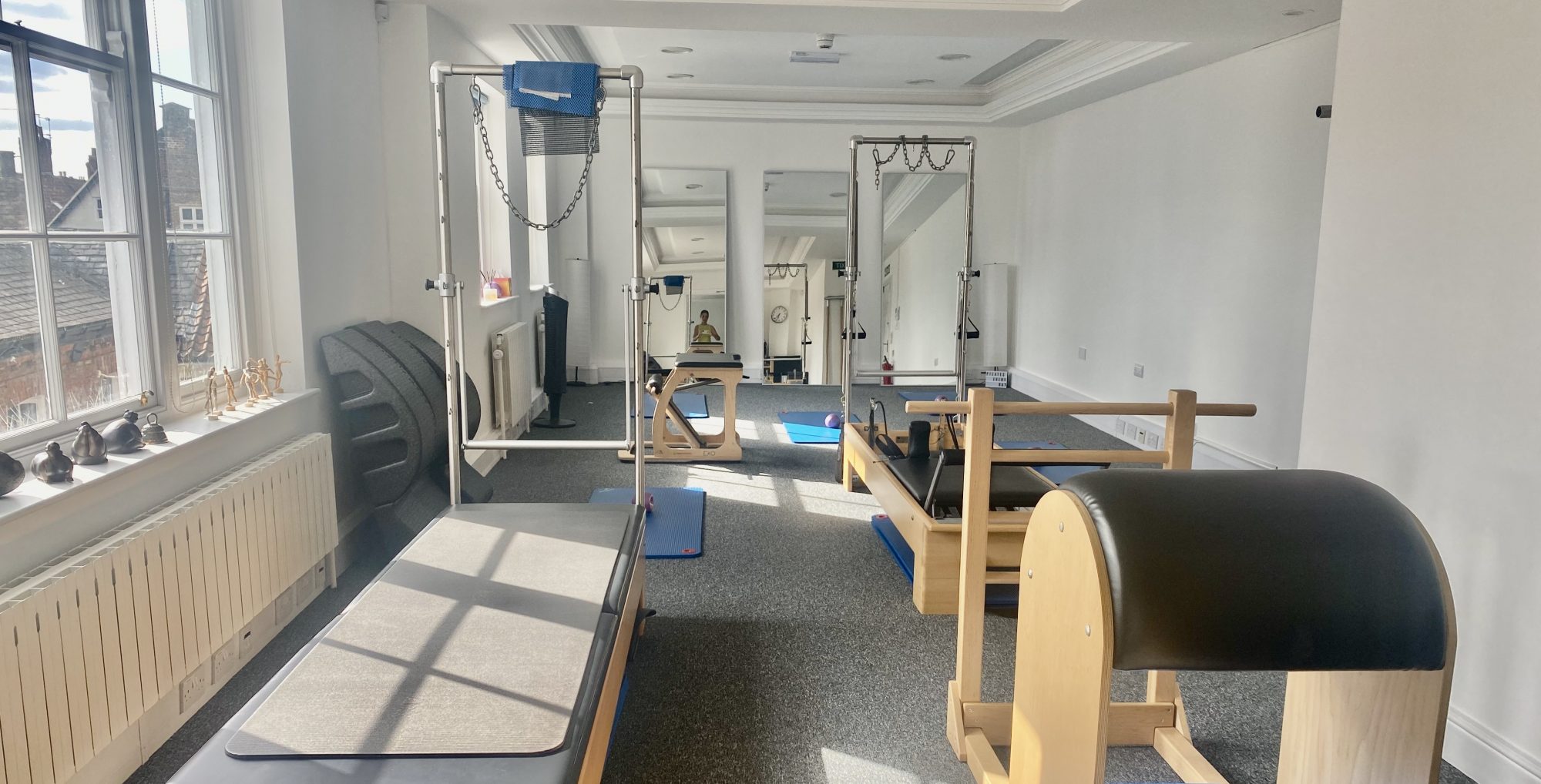
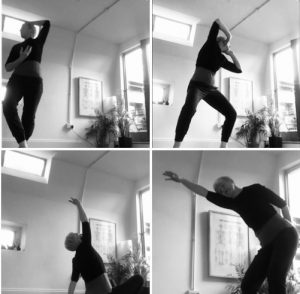
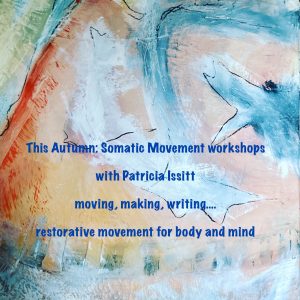 So, what is ‘somatics’ and what are we going to do to discover all this good stuff?
So, what is ‘somatics’ and what are we going to do to discover all this good stuff?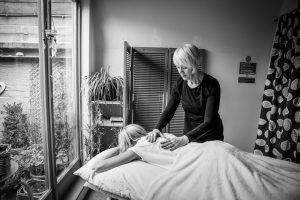
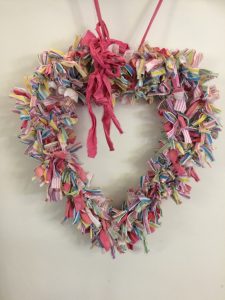 We tend to think of movement as being to do with our limbs, our muscles, our skeleton and overlook the most fundamental movements of all. Deep in our body our heart is beating a rhythm against our diaphragm, and the diaphragm responds by drawing breath into the body.
We tend to think of movement as being to do with our limbs, our muscles, our skeleton and overlook the most fundamental movements of all. Deep in our body our heart is beating a rhythm against our diaphragm, and the diaphragm responds by drawing breath into the body.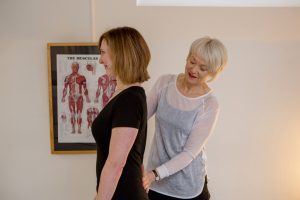 Just like any movement method, in Pilates we work with a set of principles and the 8 principles of Pilates are all an important part of how we learn to move. Yes, for sure, they are part of developing what physiotherapists call a stable core, but the so called core muscles are not really what Pilates is about. ‘The Core’ is an expression first used by physiotherapists back in the 1980’s but Pilates as a movement form had been around for decades before then. Before the word ‘core’ was invented Joe Pilates called the muscles of the trunk ‘the Powerhouse’, and in Pilates the focus into the powerhouse is the start of our movement. Most people have perfectly adequate core muscles, in Pilates we learn to sense what they are, what they feel like and how to notice and focus on them while we move. This is why Pilates is often recommended for rehabilitation, but this focus also is the basis of many other movement methods too.
Just like any movement method, in Pilates we work with a set of principles and the 8 principles of Pilates are all an important part of how we learn to move. Yes, for sure, they are part of developing what physiotherapists call a stable core, but the so called core muscles are not really what Pilates is about. ‘The Core’ is an expression first used by physiotherapists back in the 1980’s but Pilates as a movement form had been around for decades before then. Before the word ‘core’ was invented Joe Pilates called the muscles of the trunk ‘the Powerhouse’, and in Pilates the focus into the powerhouse is the start of our movement. Most people have perfectly adequate core muscles, in Pilates we learn to sense what they are, what they feel like and how to notice and focus on them while we move. This is why Pilates is often recommended for rehabilitation, but this focus also is the basis of many other movement methods too.